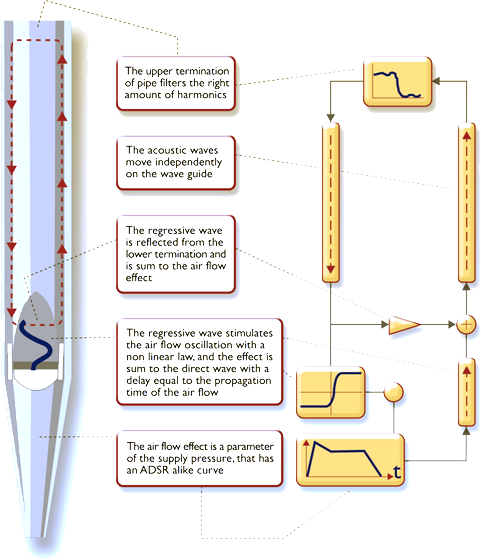Physis+ Technology
Experience the future of music with Viscount's revolutionary Physis+ Technology
Have you ever dreamt of expanding the tonal palette of your existing pipe organ, or incorporating the majesty of a pipe organ into your musical space but lacked the physical capacity? Viscount Organs North America’s Physis+ technology transcends traditional sampling, offering a groundbreaking solution.
Physis+ isn’t just about replicating pipe organ sounds – it’s about capturing their essence. It utilizes a sophisticated physical modeling technology, meticulously crafting each virtual pipe to match the specifications of your existing organ or your dream instrument. This approach goes beyond static samples, creating a dynamic and truly authentic playing experience.
Think of the difference between a flat photograph and a 3D model. A photograph captures a single perspective, while a 3D model allows you to explore every detail. Traditional pipe organ samples function like photographs, offering a basic representation of the sound. Physis+, on the other hand, is like a 3D model, dynamically rendering the sound of each pipe in real-time, accounting for the nuances of airflow, wind pressure, and organist interaction.
As you play, Physis+ calculates the subtle variations in tone, pitch, attack, and more – just like a real pipe organ. This meticulous attention to detail translates into an unparalleled level of realism and control for the organist.
Key Features
Tracker Touch
Physis+ goes beyond sound to replicate the classic organist's experience. The Tracker Toucher feature dynamically adjusts key resistance as you change stops, mimicking the feel of a traditional pipe organ.
Ensemble Effect
Physis+ technology captures the ever-evolving sound of a pipe organ, including subtle variations caused by air pressure fluctuations. This real-time modeling, combined with windchest configuration, delivers unparalleled authenticity and warmth to every note.
Space Modeling
Beyond capturing pipe organ sounds, Physis+ technology models your church's acoustics (wood, stone, plaster) for a truly immersive playing experience. This ensures optimal sound, especially for hybrid organs blending physical pipes with Viscount consoles.
Variable Windchest Configuration and Air Pressure
In a pipe organ, windchests act as the lungs, providing air that shapes the instrument's sound. Physis+ technology takes this a step further. By simulating the number and size of your windchests, it meticulously recreates how air pressure affects tone and sustain, delivering an unparalleled level of realism in every note you play.
Variable Attack based on real time computation
Real pipe organs exhibit subtle variations in attack (how a note begins) due to their windblown nature. Physis+ replicates this by dynamically adjusting attack based on player input and the virtual organ's construction, mimicking the true character of a pipe organ. This level of detail ensures an authentic playing experience.
How Physis+ Technology Works

Viscount’s Physis+ technology elevates digital organs beyond traditional sampling. Instead, it builds virtual pipe models based on real-world physics, considering factors like diameter and material. This meticulous approach allows Physis+ to create pipes that not only sound authentic but also respond realistically to the organist’s touch.
The magic truly unfolds in real-time. Physis+ generates sound dynamically as the organist plays. A sophisticated algorithm factors in everything from key presses to virtual wind chests, replicating the subtle variations in attack, pitch, and tonal response that define a real pipe organ. This level of detail, combined with the ability to customize virtual pipes and acoustics, empowers organists with unprecedented control over the sound, making Physis+ a game-changer for church musicians.
Watch: Physis Technology Behind-the-Scene
Discover the Physis+ Difference
Discover our selection of Viscount organs featuring the revolutionary Physis+ technology
